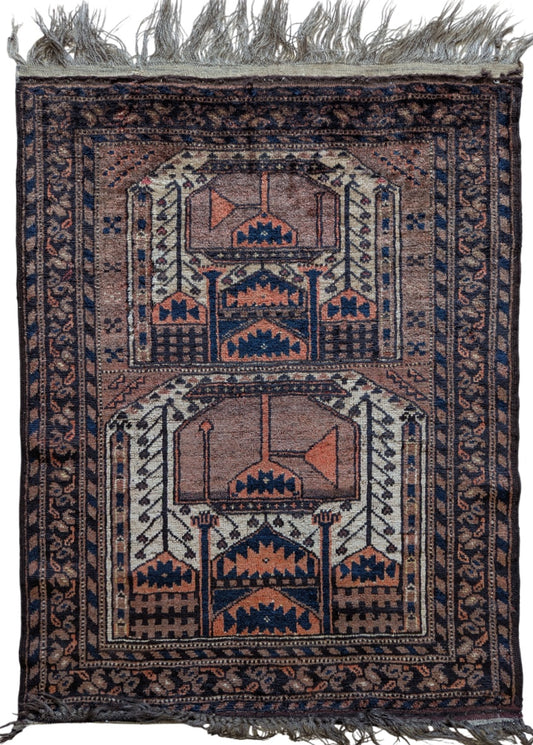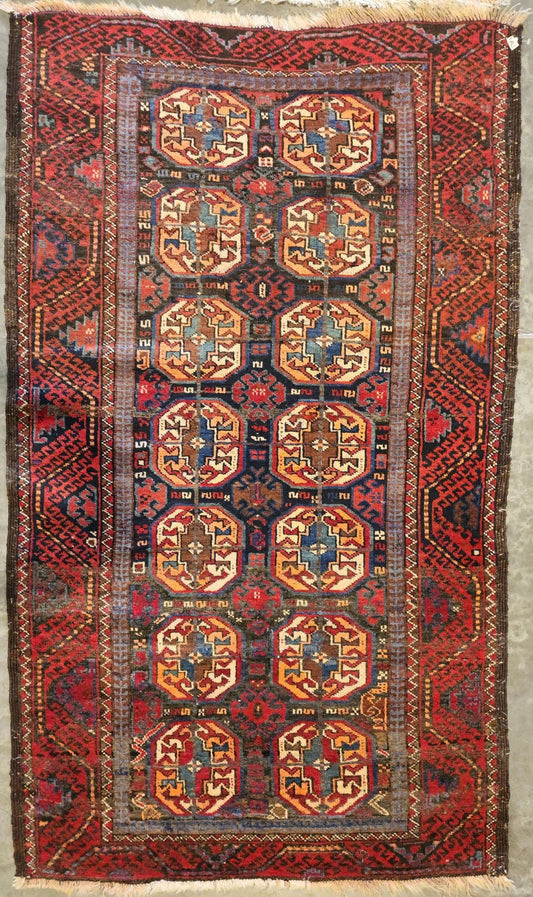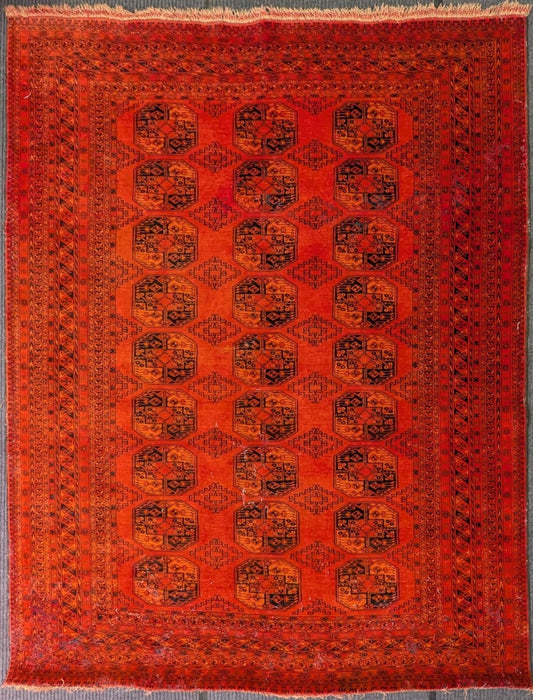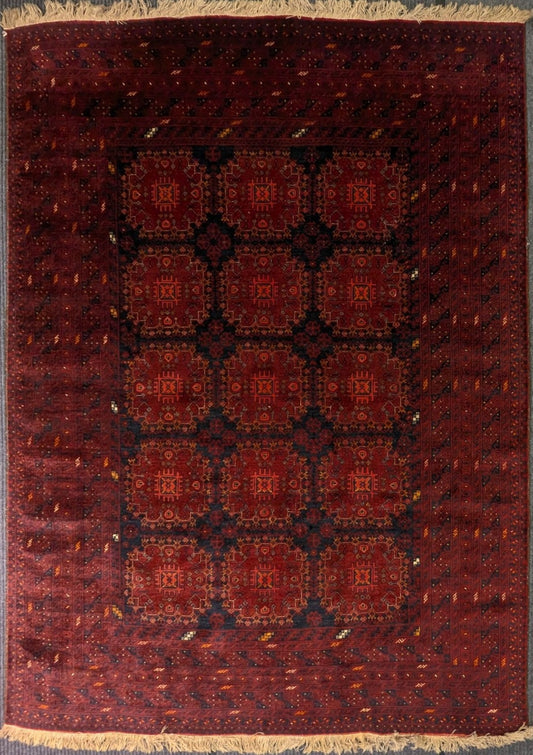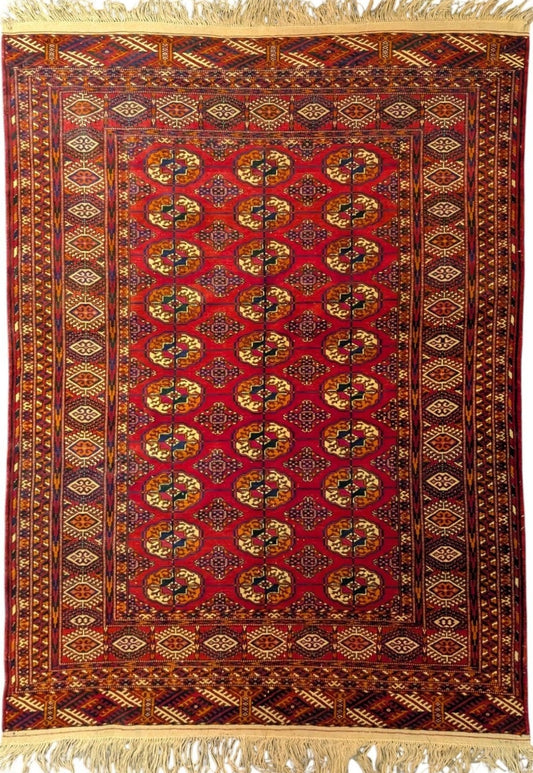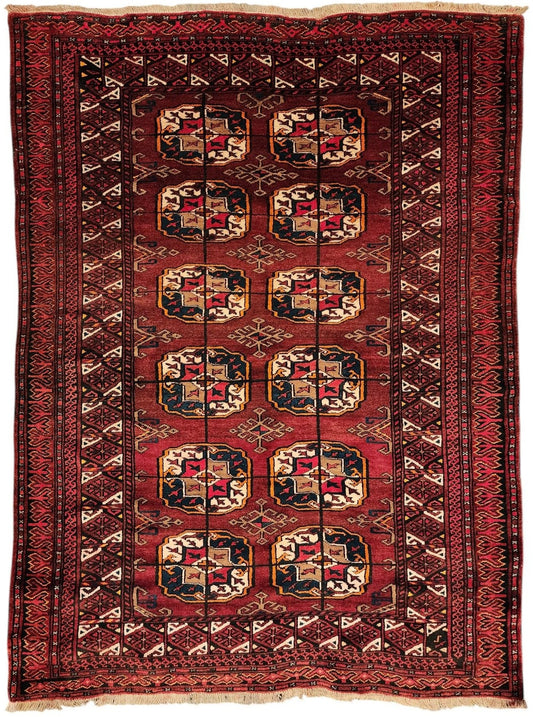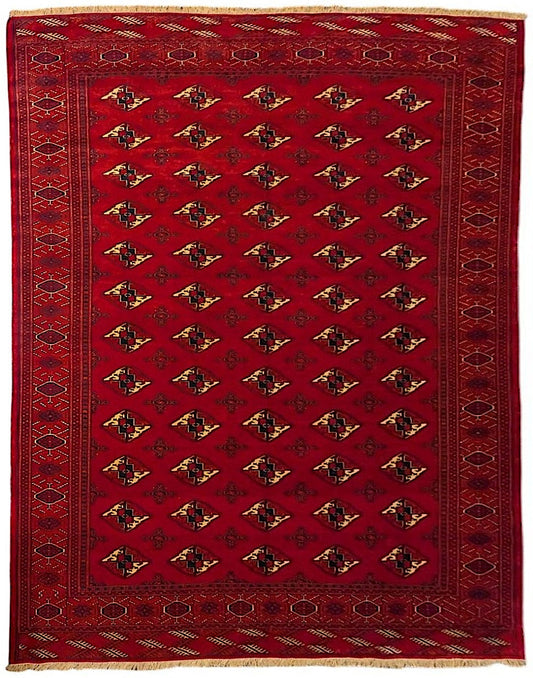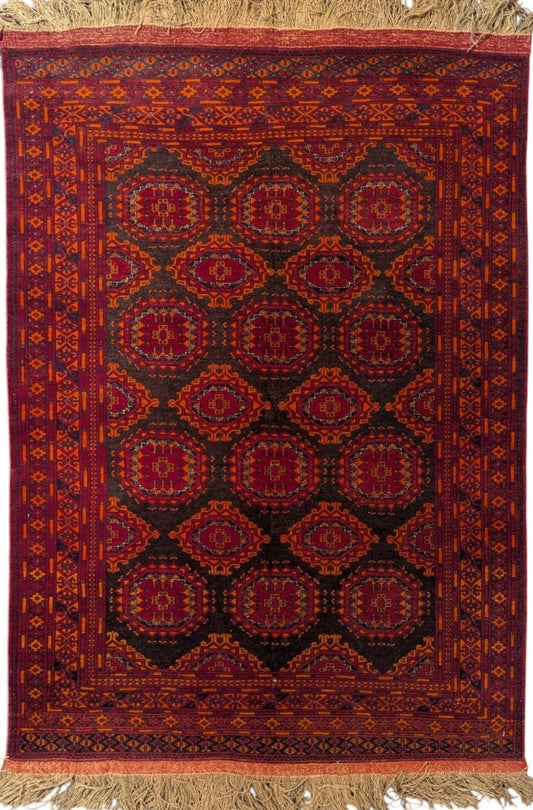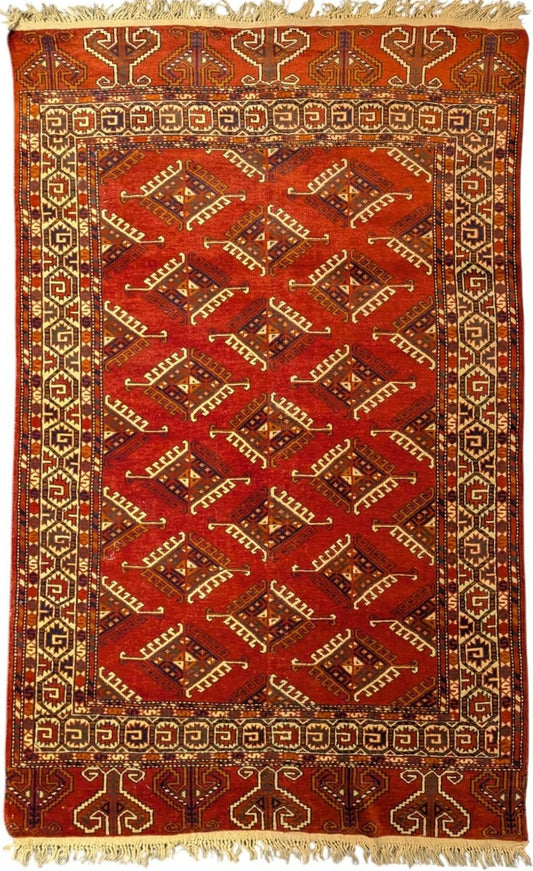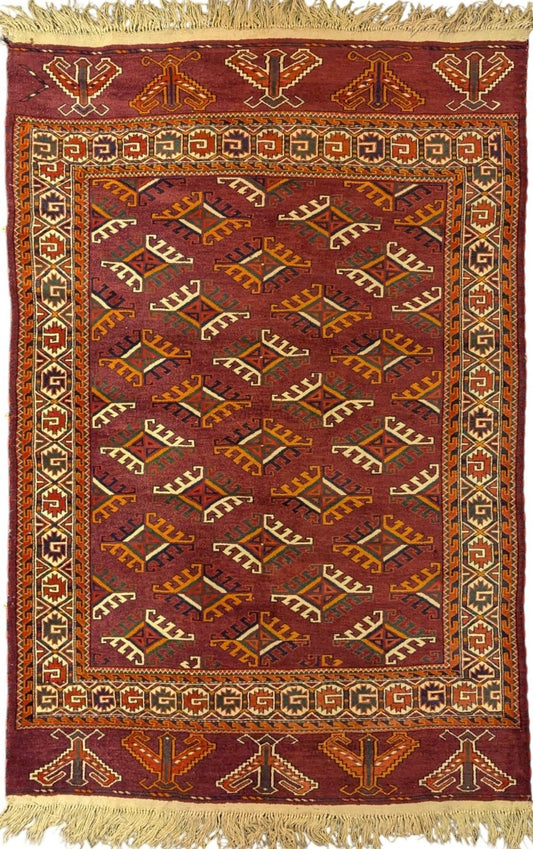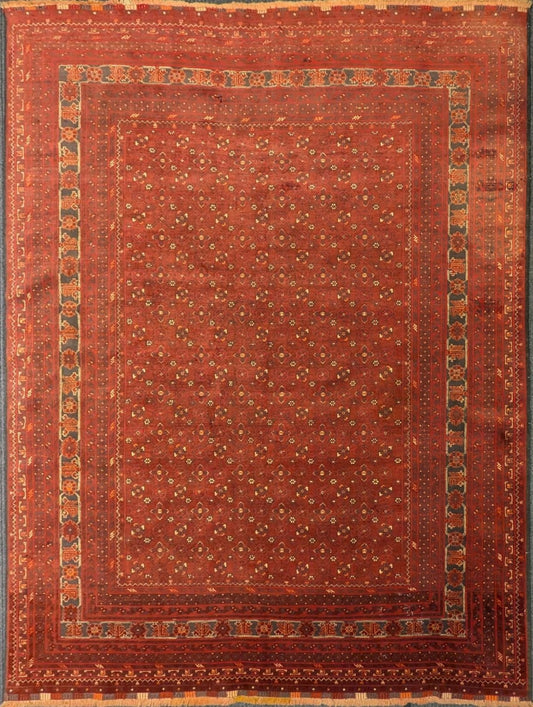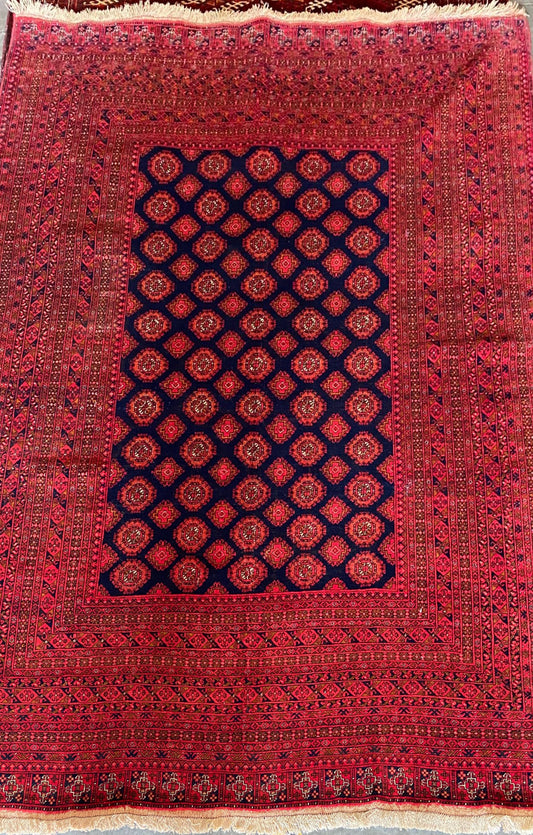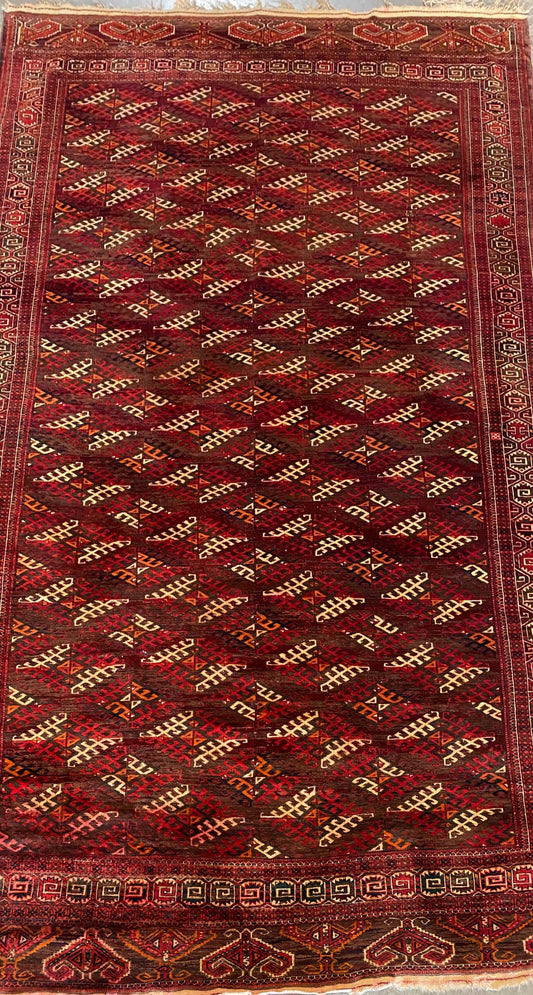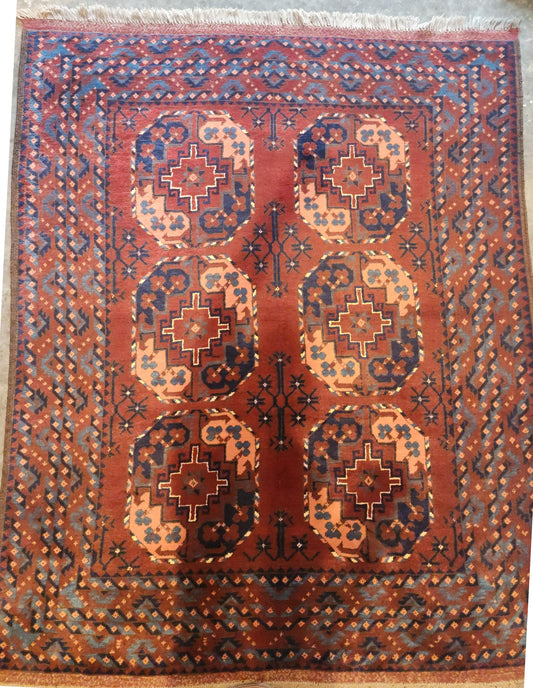Turkmen Carpets: Symbols of Nomadic Elegance
Turkmen carpets are iconic hand-knotted rugs traditionally woven by the nomadic Turkmen tribes of Central Asia, particularly in Turkmenistan, northern Afghanistan, and Uzbekistan. Known for their bold designs and deep red hues, these carpets carry centuries of tribal history and cultural symbolism.
The hallmark of Turkmen rugs is the use of "gul" motifs—repeating octagonal or diamond-shaped patterns that act as tribal signatures, varying from one clan to another. Woven using high-quality wool and natural dyes, the carpets often feature shades of burgundy, maroon, black, and ivory, lending them a rich, warm character.
Each Turkmen rug is hand-knotted with care, resulting in a dense weave that ensures both durability and comfort. These rugs were traditionally used in tents, yurts, and as part of ceremonial dowries, making them practical yet deeply meaningful pieces.
Turkmen carpets are ideal for adding a sense of earthy sophistication and cultural depth to any space. Whether placed in a living room, study, or hallway, their geometric patterns and striking color palette make a bold and timeless statement.
Owning a Turkmen carpet means owning a piece of tribal heritage—a work of art that tells a story through every knot.
Tekke: Most common; features small repeating guls on a red field.
Yomud: Geometric, tribal designs with ivory or brown accents.
Ersari: Larger motifs and open layouts; often woven in Afghanistan.
Salor: Rare and collectible; intricate patterns with high knot count.
Saryk: Elegant designs with octagonal guls and fine detail.
Beshir: Softer, more floral designs with Persian influence.
Chodor: Tribal, hooked motifs with darker tones.
Each type reflects the heritage and identity of the tribe that wove it.

